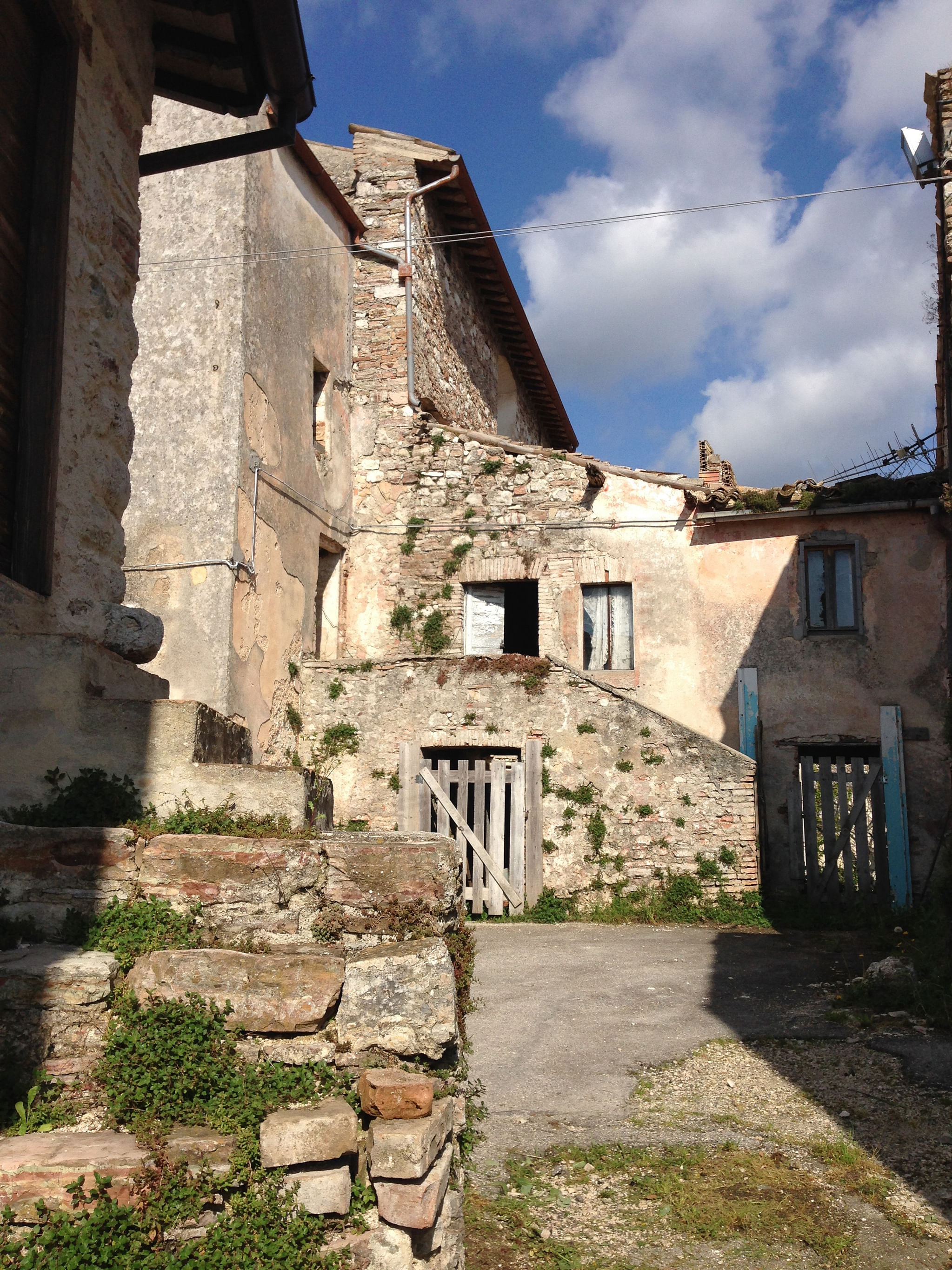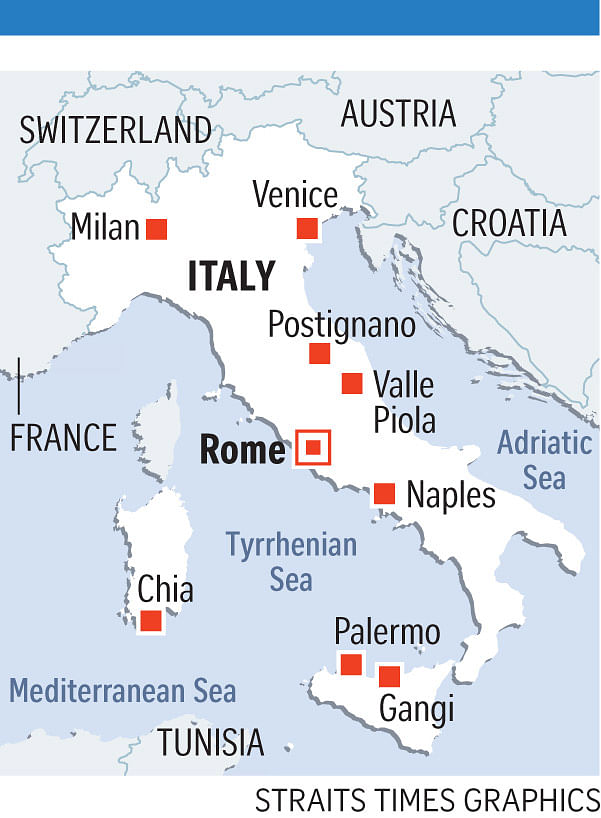-
Milan, Rome, Venice a hit with Chinese buyers
-
Lured by rock-bottom property prices and the charisma of La Dolce Vita, or the sweet life in Italian, Chinese property hunters are turning their sights to the Mediterranean.
They are snapping up properties in the cities of Milan, Rome and Venice - much to the delight of real estate agents but the chagrin of locals.
In Venice, prices have fallen 30 per cent since 2009, said property firm Knight Frank, and a one-bedder could go for €300,000 (S$454,000) in an affordable area such as Castello or Giudecca.
A report by Italian real estate consultancy World Capital Group said Chinese investors spent €600 million buying property in Italy in the 18 months up to July this year.
China Daily reported the group's chief executive Andrea Faini as saying that Chinese financial institutions such as Bank of China and China Construction Bank have opened branches in Milan to make transactions for investors easier, and the Agriculture Bank of China could follow suit.
Agents say wealthy Chinese are buying Italian property for a number of reasons. Some do it for resale and rental investment; others fancy a holiday home in the Mediterranean.
It helps that property prices in the country have remained very attractive - prices fell 1.2 per cent year-on-year in the first quarter of this year, compared with a 4 per cent rise in the region over the same period.
Milan is the top choice for these property hunters.
"Milan is more attractive to the Chinese as it's a capital of fashion and design," Mr Faini said to China Daily.
Apartments in the city centre go for €4,400 to €17,500 per sq m, said the news report.
As a comparison, property in London's most exclusive neighbourhood of Kensington and Chelsea averages £11,321 (S$20,460) per sq m.
SPECIAL REPORT
Haunting allure of Italy's ghost hamlets
Foreign investors breathing new life into some of the country's 20,000 abandoned villages





Valle Piola is a crumbly, abandoned mediaeval hamlet in central Italy's rugged Apennine hills, about 150km from Rome. Locals fled after World War II in search of better fortunes and no one has lived there since 1977.
It is one of almost 20,000 ghost villages that dot Italy. According to national statistics office ISTAT, some 6,000 hamlets are uninhabited following a series of violent quakes that destroyed century-old houses.
The populations in at least 15,000 hamlets have fallen by almost 90 per cent in the last decade as young people moved to the larger cities for work, leaving their elders behind. Harsh living conditions, remoteness, poor transport networks and unpaved roads are other key factors of depopulation.
But starting two years ago, a revival has been underway. These spooky, dusty villages - many dating back to Roman times - are turning out to be an easy and profitable snatch for well-to-do foreigners looking for a spot of year-round sunshine in Italy.
Forgotten hamlets are being given a new lease of life by holidaymakers who are buying mediaeval dwellings, old barns and stables to turn into summer holiday homes.While Europeans and Americans make up the majority of these buyers, Asians, such as the Chinese and Japanese, have also got in on the act.
Valle Piola's ruins, a cluster of 15 dwellings comprising a total of 4,400 sq m, are for sale at just €550,000 (S$832,500), says Mr Fabio Pisa, who is part of a team of developers who want to rejuvenate the hamlet.That's the cost of a 40 sq m house in Rome.
To restore the whole of Valle Piola, however, will cost some €4 million to €5 million. But that has not deterred potential private buyers from Hong Kong who recently contacted Mr Pisa, expressing interest in the hamlet.
"It was a couple interested in making it their Italian holiday retreat and in turning Valle Piola into a tourist business," said Mr Pisa.
So far, about 30 ghost hamlets - ranging in price from €500,000 to €10 million - have been sold to individual owners as well as real estate investors who want to turn the dilapidated houses into elite hotels.
This growing interest in Italy's decaying architectural heritage stems from a fascination with owning a slice of history in places frozen in time. "Unlike Italians, foreigners love ruins that are falling to the ground while we just don't know what to do with them. I'd love to sell mine and move to Perugia where my niece lives," said Madam Rosa Spada, an 89-year-old from Roviglieto in Umbria, where only seven residents are left.
There, lonely cats, unhinged doors and broken windows with torn curtains are what's left of what was once a lively community.
Mr Joshua Peterson, a 40-year-old businessman from New York, last year bought an old mediaeval barn in the abandoned ghost hamlet of Chia. He paid just €5,000.
"It was a heap of broken stones, totally destroyed, but what hit me was the silence of this off-the-beaten track place, far away from mass tourist destinations," he said.
"I regularly spend my summer holidays in Italy, so I thought it was about time I bought even a tiny house all for myself."
Mr Peterson spent €40,000 to renovate the 50 sq m cottage.
And it's not just a matter of recovering a lost world.
By breathing new life into these villages, foreigners are also energising local agriculture and manufacturing, keeping young people from moving away, and bringing in new residents while boosting tourism, said Mr Fabio di Bitonto, an independent researcher who has dedicated his life to rescuing forsaken hamlets by mapping them and bringing attention to them.

"Bringing these hamlets back from the grave means lending a hand to Italy's economy," he said.
While there are no official sales figures of foreigners buying such hamlets, recent real estate data shows that the percentage of foreigners buying a property in Italy rose this year by 35 per cent compared to last year.
There is no residency deal attached to the purchase of a ghost hamlet or parts of it, and the investment turnover is huge.
The market value of a restored dwelling is 300 per cent higher than its original purchase price, according to estimates made by several Italian real estate agencies.
New owners can also start cashing in on their purchases immediately. Summer rentals in Italy during the August peak season reach €1,000 per week for a one-bedroom house regardless of location.

In other depopulating hamlets where a few residents still live, only single dwellings can be purchased.
In villages such as Roviglieto near Perugia; Chia and Rocchettine close to Rome; and Sambuca, Partanna and Calabellotta in Sicily, €20,000 can buy a ruin that can be restyled into a summer cottage, with an overall investment of €50,000 to €80,000.
Some former villages have already been restored by architects and are ready for holidaymakers to move in. In Postignano near Perugia, ancient cottages completely refurbished with all the modern comforts and furniture are being sold for €180,000 each.
Mr Gennaro Matacena, manager of the restyled Postignano, says Asian buyers are eyeing homes in the mediaeval village. A Filipino woman recently bought a single house, while several Chinese families visited during the summer.
Mr Matacena said they were planning on buying several dwellings.
"Chinese and Asians are among the most interested clients," said real estate agent Alessandro Cilibrasi of Gangi, a beautiful village of dozens of houses in deep Sicily where the population is dwindling by the day. Potential buyers from China and Singapore have visited and negotiations are underway, he said. So far, 120 houses have been sold.
Local authorities have created websites to help attract investors, with pictures and detailed information of houses on sale.
Far from feeling that their heritage is being traded, local residents are happy that the villages are being given new life.
Foreign capital is particularly welcome now, given the sluggish economy of many underdeveloped areas in southern and central Italy.
Signs in Chinese greet visitors at the entrance of Gangi and a guided tour unwinds through the historical centre which has more signs in Chinese, pointing to the main highlights of the village: the ancient Roman boutiques, picturesque alleys and Arab courtyards.
In hotels, there are brochures in Chinese and English and pots of tea in the rooms for Asian guests.
A Chinese delegation of tourism operators toured Sicily's abandoned hamlets this year together with China's state television. "They were spellbound by the beauty of our land and ancient traditions. We look forward to doing business with them," said Mr Cilibrasi.
Join ST's Telegram channel and get the latest breaking news delivered to you.
A version of this article appeared in the print edition of The Straits Times on December 06, 2016, with the headline Haunting allure of Italy's ghost hamlets. Subscribe
